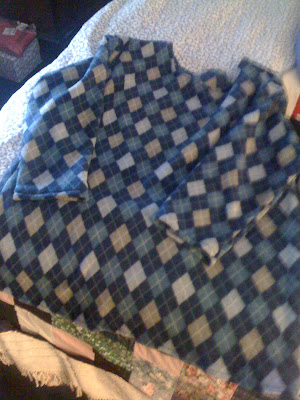Now, don't get me wrong: there's a place in the world for plastic. I have been a medical writer for years, and I know that there are medical devices that rely, quite necessarily, heavily on plastic. I wouldn't want to try to take all of that out of the world. Heck, I'm even old enough to remember television commercials touting plastic shampoo bottles as a safer alternative to the glass variety that would shatter if dropped on tile floors near bare feet. Plastic can be durable and lighter to transport.
However, when it comes to plastic in my food, that is where I draw the line. It is bad enough that I have to worry about GMOs, pesticides, herbicides, antibiotics, and hormones, but plastic adds another chemical threat that can leach into food and do God-knows-what to our bodies. Just the other day I saw the epitome of plastic insanity: Reynolds (the aluminum foil people) have come out with plastic baggies you can put in your slow cooker so that you run absolutely no risk of having to clean food out of your crock after cooking. That's right: you have the opportunity to cook your food in plastic for 10 hours so you don't waste 10 minutes applying some elbow grease.
That's why I was glad when Rodale.com asked me to take part in
Rodale.com's Plastic Free February. Bloggers across the country are going to see what happens when they try to eliminate plastic from their lives for a day, week, or whole month. Here is my first report:
Day One - The Grocery: It is virtually impossible to go to the grocery and not buy plastic. Forget about anything approaching a convenience food. I try to make as much of our food as possible from scratch, but hey: I work two jobs and have a raging sweet tooth. Even at the best of times, I can bake a batch of cookies a week, tops. But those Oreos I covet come in a little plastic tray. Thank heavens Pepperidge Farm Milanos come in paper sleeves in a paper bag.
Think you can avoid plastic by shopping the perimeter of the store? Think again. Fruits and veggies may be bare, but you have to remember to bring your own bags or you are left to use those little plastic ones from the dispenser. I don't know that I've ever seen cheese that wasn't wrapped in plastic. And even milk: if I want to buy in volume (that is, a gallon), I have to buy a plastic jug at our store. Or, I can schlepp across town to buy the local, sustainable version in the glass half-gallon jug shown above. It is hormone free, mostly grass-fed, three times as expensive as the regular store brand -- and it still has a plastic handle.
Day Two - Food Storage: I'm lucky that I'm an avid home canner, because I can refrigerate and freeze many foods in canning and freezing jars. However, if I don't want to use the canning lids (unnecessary if I'm not canning), my only option is a plastic screw-top lid. Even the disposable canning lids (the flat metal ones) are coated with plastic on the inside. Luckily for both of these options, the lids rarely touch the food. I've found a canning lid not coated with BPA that I plan to try this year, but it is a more expensive option.
Otherwise, food storage involves some make-do. We put leftovers on plates and cover with a bowl. Investing in glass storage containers is worthwhile, but it will take some time and some money.
Day Three - Food Prep: At last, something that I can control. Or can I? Look around your kitchen and see how many utensils have plastic handles that might touch your food. And heaven forbid you decide to use a non-stick pan; plastic and silicone tools are basically your only options. I suppose I could commit myself to using my cast iron dutch oven and my wood and metal granny fork....
The Lesson: Just three days of trying to eliminate the plastic that touches my food, and it is an epic fail. And remember, I'm a person who has committed herself to high quality food. I grow my own, I source things locally, and I cook from scratch. I'm well-educated enough to assess the dangers and benefits of plastic, and I make enough money to afford to make extra trips to the local bodega for milk in a glass jar or to buy a bunch of glass food storage containers. Even with these advantages, I can't realistically make a choice to totally eliminate the plastic that touches my food -- to say nothing of my toothbrush, my bottle of mouthwash, or my bottle of pain relievers. What does that mean for those who don't have those advantages?
What do you think? Have you tried to reduce plastic? Is it worth it?










